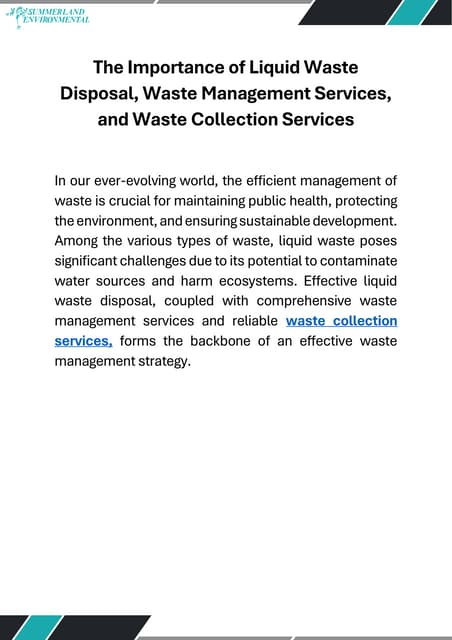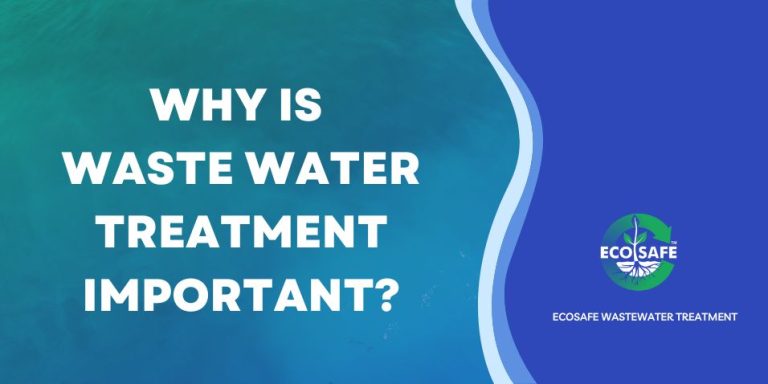About Reclaim Waste
About Reclaim Waste
Blog Article
The Ultimate Guide To Reclaim Waste
Table of ContentsSome Ideas on Reclaim Waste You Should KnowThe Reclaim Waste Ideas10 Easy Facts About Reclaim Waste DescribedThe 6-Second Trick For Reclaim WasteThe smart Trick of Reclaim Waste That Nobody is Talking About
Discover the kinds, occurrences, and kinds of fluid waste. Domestic sewer waste describes the waste and products from a residential septic tank. This sort of waste is created by people in residences, institutions, and other buildings. This only includes septic containers that have a drain field. The proper monitoring and disposal of domestic sewage waste need fluid waste to be transferred to a sewer treatment plant where the proper techniques and equipment are put on detoxify and get rid of waste.
Commercial waste commonly consists of prospective hazards, such as flammable materials or a mix of liquid and solid waste products, and needs a much more advanced and comprehensive disposal process. The disposal of commercial waste generally includes the filtration of waste before transportation to make sure safe and proper disposal. Industrial waste is produced from byproducts and drainage of commercial processes and production.
This type of waste can not utilize the exact same sewage management transportation or processes as septic or commercial fluids. The hazardous waste management process needs the evaluation and testing of fluid waste prior to it undergoes the disposal procedure (liquid waste disposal). Drainage waste is the fluid waste that originates from runoff and excess stormwater in highly populated locations or cities
Overflow waste can trigger contamination and flooding if not handled properly. Making sure proper waste administration can stop calamities and reduce ecological injury.
The Definitive Guide for Reclaim Waste
Call PROS Services today to discover our waste management and disposal solutions and the proper means to care for the liquid waste you generate.
(https://www.blogtalkradio.com/reclaimwaste1)Do you understand what occurs to your water when you disengage, flush the commode or drain the washing equipment? No? Well, it deserves understanding. This so-called 'wastewater' is not only an essential source however, after treatment, will certainly be launched to our land, waterways or the sea. Used water from bathrooms, showers, baths, cooking area sinks, laundries and commercial processes is referred to as wastewater.

water made use of to cool machinery or tidy plant and equipment). Stormwater, a form of wastewater, is overflow that flows from agricultural and urban areas such as roofings, parks, yards, roadways, courses and gutters into stormwater drains pipes, after rainfall. Stormwater flows unattended straight to regional creeks or rivers, eventually reaching the ocean.
Everything about Reclaim Waste
In Queensland, a lot of wastewater is treated at sewer treatment plants. Wastewater is transferred from domestic or commercial sites with a system of sewers and pump stations, known as sewage reticulation, to a sewage treatment plant. Neighborhood federal governments construct, preserve and operate most sewer treatment plants. Operators are certified under the Environmental Security Act 1994 to release cured wastewater at an appropriate ecological criterion into waterways.
The Division of Natural Resources encourages local federal governments regarding managing, operating and preserving sewage systems and treatment plants. In unsewered locations, local governments might require owners to install private or home sewage therapy systems to deal with residential wastewater from commodes, kitchens, washrooms and washings. The Department of Natural Resources authorises making use of household systems when they are proven to be efficient.
Most stormwater obtains no treatment. In some brand-new neighborhoods, treatment of some stormwater to eliminate trash, sand and crushed rock has begun using gross pollutant traps. Wastewater treatment happens in 4 phases: Removes solid issue. Larger solids, such as plastics and various other things mistakenly released to drains, are gotten rid of when wastewater is passed with screens.
Wastewater after that streams right into huge tanks where solids work out and are gotten rid of as sludge. Oil and scum are skimmed from the surface continue reading this area. Utilizes small living microorganisms called micro-organisms to break down and remove staying liquified wastes and great fragments. Micro-organisms and wastes are integrated in the sludge. Eliminates nitrogen and phosphorus nutrients that could create algal blossoms in our rivers and intimidate marine life.
A Biased View of Reclaim Waste
Nutrient elimination is not readily available at all sewage therapy plants due to the fact that it needs expensive specialized tools. Clear fluid effluent created after therapy might still include disease-causing micro-organisms - liquid waste removal melbourne.

A lot of wastewater moves into the sewage system. Under the Act, neighborhood governments provide authorizations and licences for eco appropriate activities (ERAs) entailing wastewater releases that may have a local influence.
The Ultimate Guide To Reclaim Waste
Otherwise, examples are considered laboratory analysis. Often lots of tests are needed to establish the degrees of each of the different pollutants such as oils, heavy steels and pesticides in water. Monitoring provides valid details concerning water high quality and can confirm that permit conditions are being met. The information acquired through surveillance gives the basis for making water high quality choices.
Report this page